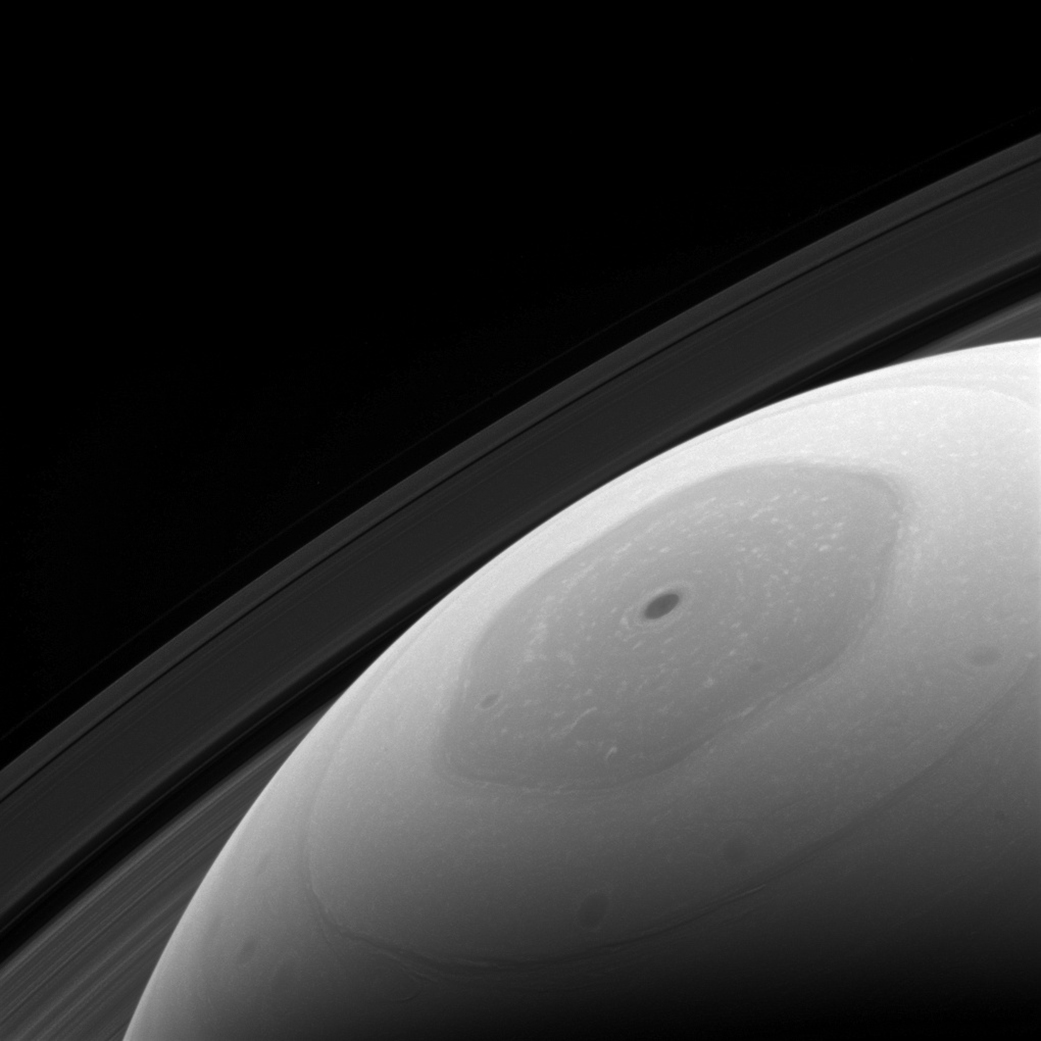Hexagon Eye of Saturn Stares into Space in Stunning Photo

Saturn never blinks.
The ringed planet's bizarre "eye" — its north polar vortex and surrounding hexagonal jet stream — stares impassively out into space in an amazing photo by NASA's Saturn-orbiting Cassini probe.
Though NASA released the image just Monday (May 8), Cassini actually snapped it on Jan. 22. At the time, the spacecraft was about 560,000 miles (900,000 kilometers) from the gas giant's cloud tops, agency officials said. [See Saturn's Weird Hexagon in Technicolor Techno (Video)]
The photo has a resolution of about 33 miles (54 km) per pixel, they added.
Saturn's hexagon is about 20,000 miles (32,000 km) wide and consists of air traveling at about 200 mph (320 km/h), scientists have said. Other planets, including Earth, are known to have jet streams, but none of them remotely resemble Saturn's north polar hexagon.
The strange feature was first spotted in the early 1980s by NASA's Voyager mission. Cassini has gotten some good looks at the hexagon since August 2009, when spring arrived in Saturn's northern hemisphere and the sun began flooding the area with light.
"Although the sunlight falling on the north pole of Saturn is enough to allow us to image and study the region, it does not provide much warmth," NASA officials wrote in an image description Monday. "In addition to being low in the sky (just like summer at Earth's poles), the sun is nearly 10 times as distant from Saturn as from Earth. This results in the sunlight being only about 1 percent as intense as at our planet."
Breaking space news, the latest updates on rocket launches, skywatching events and more!
The $3.2 billion Cassini-Huygens mission is a joint effort involving NASA, the European Space Agency and the Italian Space Agency. The Cassini spacecraft launched in October 1997 and arrived at Saturn in July 2004. (Huygens was a piggyback lander that touched down on Saturn's largest moon, Titan, in January 2005.)
The Cassini orbiter is nearing the end of its impressive mission, which discovered liquid-hydrocarbon seas on Titan and a buried, potentially life-supporting ocean on the Saturn moon Enceladus, among other accomplishments.
Late last month, Cassini began the "Grand Finale" phase of its mission, a series of 22 dives between Saturn and the planet's innermost rings. On Sept. 15, the orbiter will end its life with an intentional dive into Saturn's thick atmosphere, a maneuver designed to ensure that the probe doesn't contaminate Titan or Enceladus with microbes from Earth.
Follow Mike Wall on Twitter @michaeldwall and Google+. Follow us @Spacedotcom, Facebook or Google+. Originally published on Space.com.

Michael Wall is a Senior Space Writer with Space.com and joined the team in 2010. He primarily covers exoplanets, spaceflight and military space, but has been known to dabble in the space art beat. His book about the search for alien life, "Out There," was published on Nov. 13, 2018. Before becoming a science writer, Michael worked as a herpetologist and wildlife biologist. He has a Ph.D. in evolutionary biology from the University of Sydney, Australia, a bachelor's degree from the University of Arizona, and a graduate certificate in science writing from the University of California, Santa Cruz. To find out what his latest project is, you can follow Michael on Twitter.
